Analysis of osteological remains
Jorge Nukyen Archer Velasco (2015)
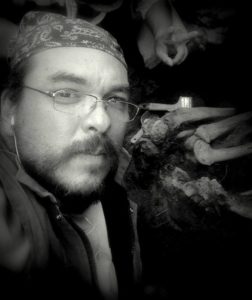
Originally from Mexico City, Jorge graduated with honors from the National School of Anthropology and History (ENAH) where he received his master’s degree in Physical Anthropology with a specialization in ancient migration. He is a specialist in bioarchaeological research and also in the analysis and digitization of funerary contexts.
He has collaborated on multiple projects in Teotihuacan since 2004, including but not limited to the Barrio Oaxaqueño Project, the Sun Pyramid, La Ventilla, and the Feathered Serpent Pyramid. He was responsible for analyzing part of the first season’s human burial osteological material.
Teresa Hsu (2016-2019)
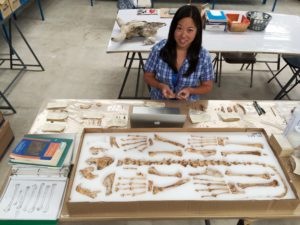
Teresa is manager for the Program in Human Ecology and Archaeobiology at the National Museum of Natural History, Smithsonian Institution. She received her Master’s degree in Osteoarchaeology at the University of Southampton, England, where she conducted research using ancient DNA from Pleistocene guanacos of South America. Besides her work on megafauna extinction of camelids and equids across the Western Hemisphere, she has experience in analyzing osteological material from archaeological sites in the Old World (e.g., Hallan Çemi in Turkey) and coastal sites in Hawaii, Alaska, Oregon, as well as Papua New Guinea. Her background and expertise continue to span across a number of disciplines including forensic anthropology, human skeletal biology, animal domestication, as well as comparative and functional morphology.
Teresa has worked with the Smithsonian Institution since 2011 on the organization, conservation, and management of the PHEA’s collections of modern, archaeological, and paleontological skeletal remains and artifacts. She joined the project in 2015, assisting with the excavations of Front C and initial management of artifact processing at Casa del Rio. With her background in conservation and osteology, she helped curate maxilla necklaces from previous excavations at Teotihuacan as well as processed skeletons for a new comparative osteological collection for the project. She returns to Mexico in 2016 to analyze the first season’s bone material.
Leila Martinez (2017)
Leila is a graduate student at George Mason University where she studies zooarchaeology under Dr. Nawa Sugiyama. Leila began studying with Dr. Sugiyama as an undergraduate research assistant through the OSCAR (Office of Student Scholarship, Creative Activities, and Research) program at George Mason University and went on to be awarded funding through the OSCAR undergraduate research grant in order to do analysis of archaeofaunal material at Teotihuacan over the summer. Leila is particularly interested in human-animal relations and what they can tell us about past societies and is continuing to do research and ask questions about humans and animals at the graduate level.
Esther Aguayo (2019)
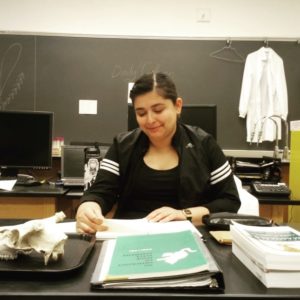
Esther is an archaeologist specializing in the study of animal remains in archaeological contexts. She received her B.A. in Anthropology from San Diego State University and is currently working towards her M.A. in Anthropology at George Mason University. She has worked at the San Diego Natural History Museum’s zooarchaeology lab teaching guests about zooarchaeology and identifying animal remains from local archaeological sites. At George Mason University, Esther had the opportunity to prepare samples from Plaza of the Columns for isotope analysis and taught undergraduate students the processing of osteological material. In 2019 she joined the Plaza of the Columns Complex Project at Teotihuacan to conduct an analysis of deer assemblages found at the Plaza of the Columns Complex in order to investigate the role deer had in ancient times.
Andrew Somerville (2019)
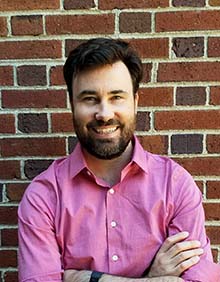
Andrew Somerville is an Assistant Professor of Anthropology at Iowa State University. There he serves as director of the Paleoecology Laboratory, the director of the Forensic Sciences graduate certificate program, and is a faculty member of the interdisciplinary graduate program in Ecology and Evolutionary Biology. He received a B.A. in anthropology from Arizona State University and a M.A. and Ph.D. in biological anthropology from the University of California, San Diego. He has participated in archaeological field projects in the Southwest United States, in northern and central Mexico, in southern Peru, and in the Saharan Desert of northern Niger. Dr. Somerville’s research uses bioarchaeological methods, particularly skeletal biology and stable isotope analysis, to investigate various aspects of human ecology. He is particularly interested in the long-term dynamics of human-environmental interactions in pre-Hispanic Mesoamerica. His research has been funded by the National Science Foundation, the Wenner-Gren Foundation, an IGERT fellowship, Sigma-Xi, the University of California, and Iowa State University. Dr. Somerville has been collaborating on research at Teotihuacan for several years. Together with Dr. Nawa Sugiyama, he has studied the food production systems of the ancient city. In particular, he used stable isotope analysis of captive rabbits and jackrabbits to increase our understanding of how these animals were raised for food and fur. He continues to collaborate on the Project Plaza of the Columns Complex and is currently analyzing the human bones uncovered during past field seasons. Additionally, he is developing a new field research project with Dr. Marion Forest at the Teotihuacan locality of Hacienda Metepec.
Edsel Rafael Robles Martínez (2022)
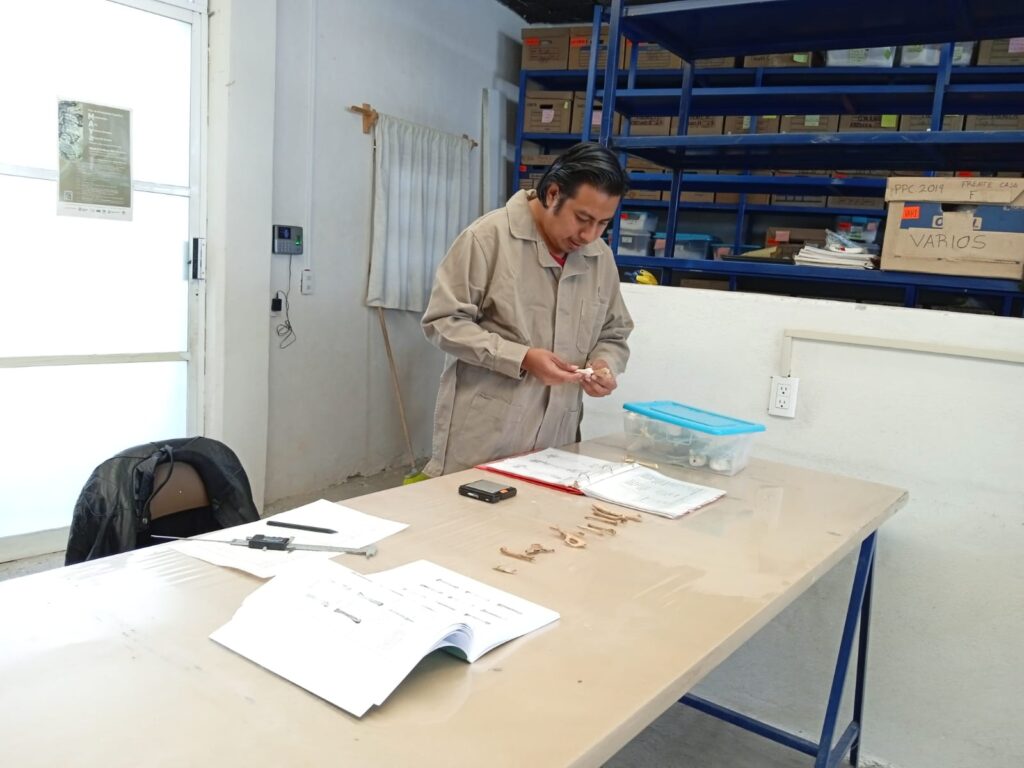
Edsel received his B.A. in archaeology from the Escuela Nacional de Antropología e Historia (ENAH) and his M.A. in Mesoamerican Studies from the Universidad Nacional Autonóma de México (UNAM). He has participated in archaeological field projects in San Luis Potosí, Hidalgo, Querétaro and Morelos.
He specializes in analyzing archeozoological remains, he has worked with collections from the following archaeological sites: Tamtoc, S.L.P., Chalchihuites, Zac., Cantona, Pue., Templo Mayor de Tenochtitlán, Tula, Hgo., and Tlayacapan, Mor. Edsel is particularly interested in taphonomic processes and studying artifacts manufactured from osseus remains, characterizing traces of manufacture and traces of use.
He has worked in the Paleoethnozoology Laboratory (ENAH) and the Laboratory Ticúl Álvarez Solórzano (INAH).